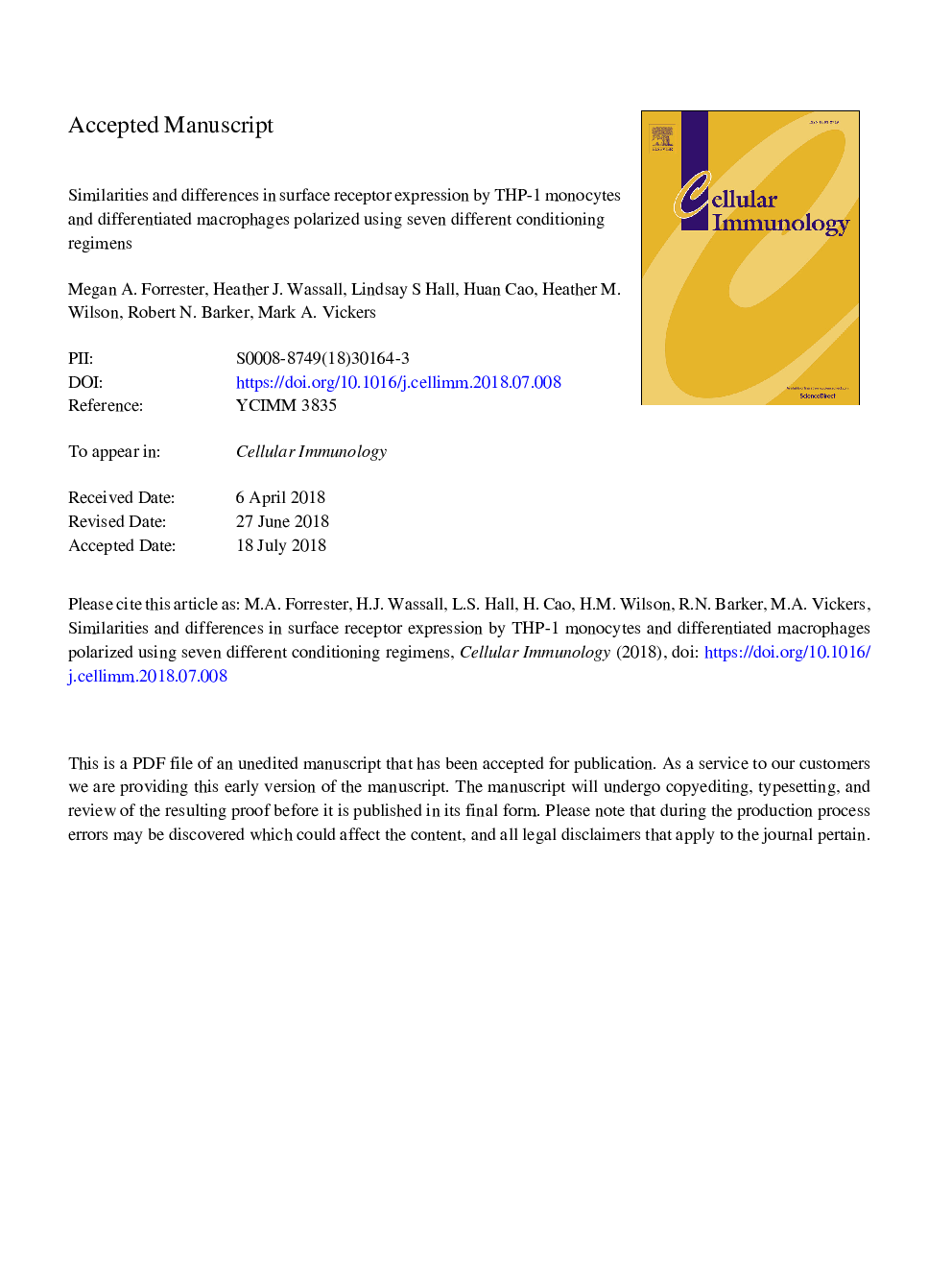| Article ID | Journal | Published Year | Pages | File Type |
|---|---|---|---|---|
| 8962230 | Cellular Immunology | 2018 | 43 Pages |
Abstract
Macrophages are key in orchestrating immune responses to micro-environmental stimuli, sensed by a complex set of surface receptors. The human cell line THP-1 has a monocytic phenotype, including the ability to differentiate into macrophages, providing a tractable, standardised surrogate for human monocyte-derived macrophages. Here we assessed the expression of 49 surface markers including Fc, complement, C-type lectin and scavenger receptors; TIMs; Siglecs; and co-stimulatory molecules by flow cytometry on both THP-1 monocytes and macrophages and following macrophage activation with seven standard conditioning/polarizing stimuli. Of the 34 surface markers detected on macrophages, 18 altered expression levels on activation. From these, expression of 9 surface markers were consistently altered by all conditioning regimens, while 9 were specific to individual polarizing stimuli. This study provides a resource for the study of macrophages and highlights that macrophage polarization states share much in common and the differences do not easily fit a simple classification system.
Keywords
SSC-ATNFLPSCLECTIMHBSSFSC-AFCSphorbol 12-myristate 13-acetateTHP-1PMAEDTAEthylenediaminetetraacetic acidinterferonIFNcluster of differentiationfetal calf serumCell surfaceSiglectumor necrosis factorFlow cytometrypolarizationlipopolysaccharideMacrophageHank’s balanced salt solutionMonocyteforward scatterC-type lectin receptor
Related Topics
Life Sciences
Biochemistry, Genetics and Molecular Biology
Cell Biology
Authors
Megan A. Forrester, Heather J. Wassall, Lindsay S. Hall, Huan Cao, Heather M. Wilson, Robert N. Barker, Mark A. Vickers,
